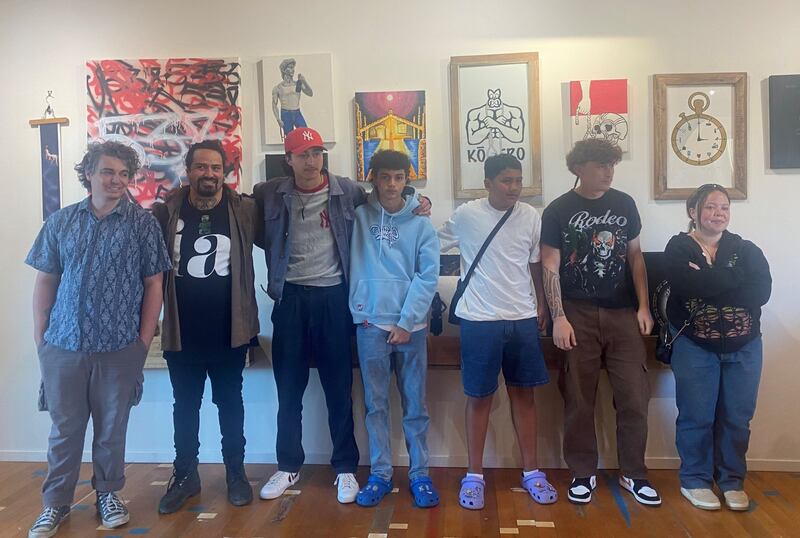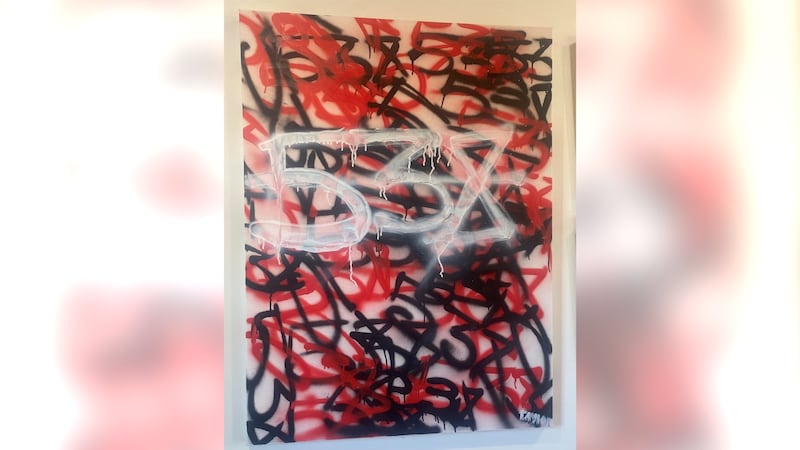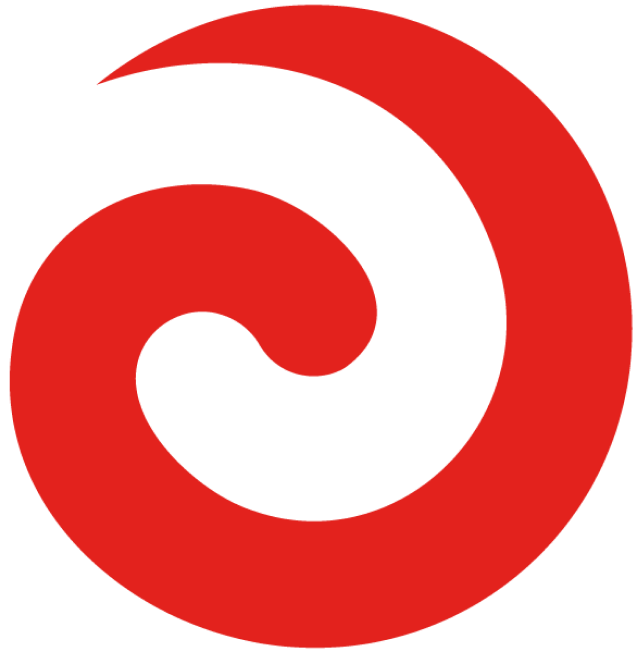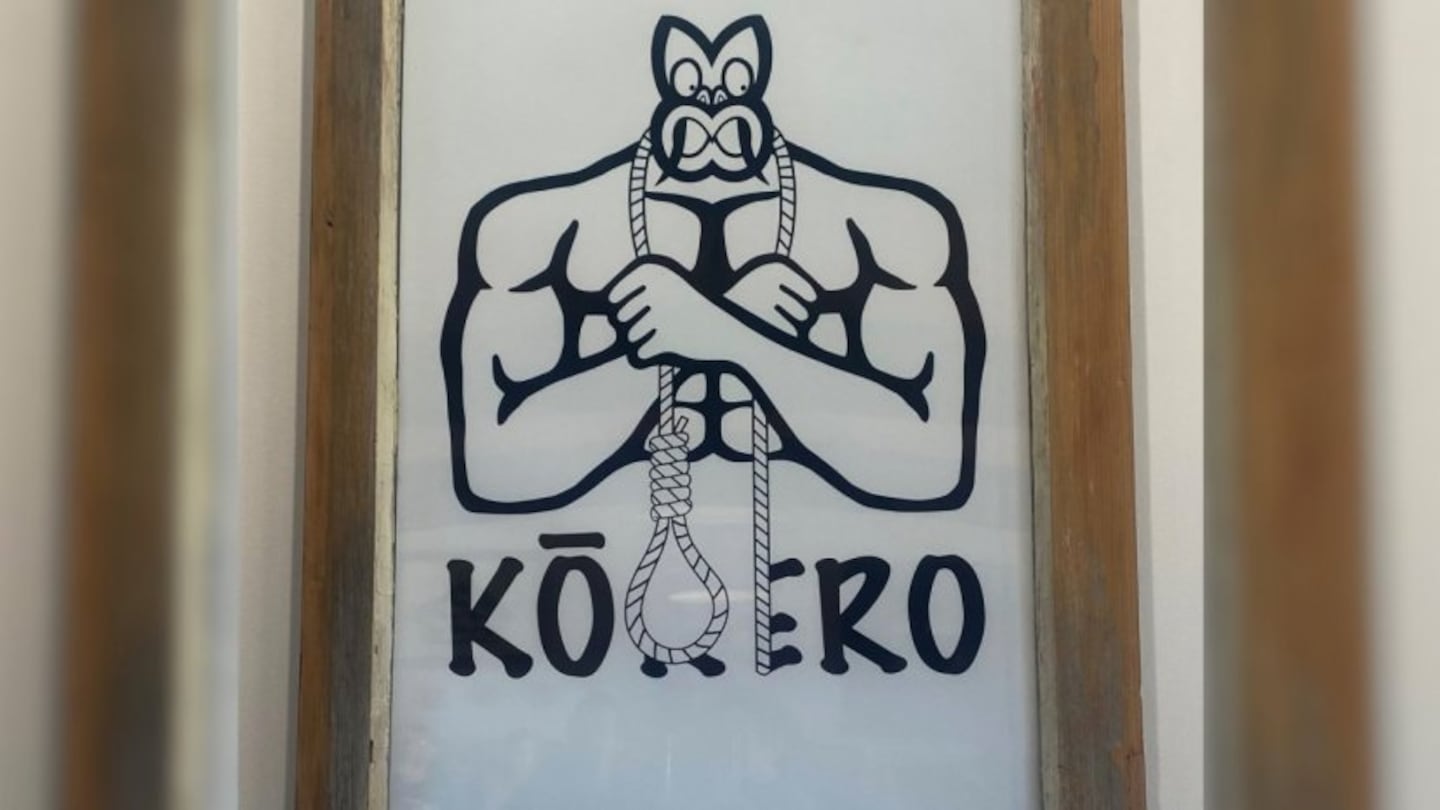A provocative piece from Hōmai Haumaru conveys the idea if we speak about dark thoughts, we stop dark actions. Photo / TPK
Rangatahi in Ōtaki have been given a new tool to tackle concerns for declining mental health - the paintbrush.
Sometimes notorious artist, teacher, gallery and café owner and entrepreneur Hohepa Thompson, AKA Hori has turned his knack for creativity and educating young people to a new kaupapa, helping rangatahi express their mental health concerns through artwork.
Hōmai Haumaru evolved from a series of exhibitions the former high school teacher had at his gallery during lockdown; the project recruits rangatahi, mentoring them to create deeply personal art pieces that help communicate their feelings about mental health.
“Art is such an important tool to tell a story,” Hori says. “Especially for the tough guys, it’s a way for them to be vulnerable and really express how they are feeling.”
One provocative piece, Whiro-te-tipua, represents the god of darkness, the embodiment of evil. At first glance, Whiro seems big and strong but on looking closer viewers see his small face and nervous-looking eyes.
Kōrero appears beneath the image, to convey the idea that if people speak about their dark thoughts, they scare away Whiro-te-Tipua and stop dark actions.

Hohepa Thompson with rangatahi at the Hōmai Haumaru exhibition. The artworks will be auctioned off to benefit Mike King's Gumboot Friday charity. Photo / TPK
Artists and speakers including Pera Barrett, Xoë Hall, Miriama Grace-Smith, Tāme Iti, and Kereama Taepa came to kōrero with the rangatahi during the wānanga, bringing different skills, artistic mediums and discussions to the table.
In 537 rangatahi harnessed their love for graffiti, with the number appearing in white over a tagged backdrop, the 537 representing how many lives were lost to suicide in 2021 in Aotearoa.
New Zealand has the worst teen suicide rate in the OECD, at 18 per 100,000 for those aged 15–19.
Funding for the wānanga came from Te Puni Kōkiri, after research suggested the Horowhenua and Kāpiti region had the worst statistics within Te Tai Hauāuru.
The need for rangatahi programmes in the area was evident according to Lia Forrest, Te Puni Kōkiri Te Tai Hauāuru Regional Advisor.
“We met with rangatahi providers to figure out what the landscape actually was.
“The engagement told us that these rangatahi basically had nothing to do”, Lia says.
“Boredom can be deadly,” Hori says.
After a month-long run at The Hori Gallery, the artwork will be included in a show at Toi Matarau, the Māoriland Hub Art Gallery, this year.

In ‘537’ rangatahi harnessed their love for graffiti with the number appearing in white over a tagged backdrop. 537 represents how many lives were lost to suicide in 2021, in Aotearoa. Photo / TPK
Individual pieces will later be auctioned off, with the proceeds going to mental health campaigner Mike King’s charity, Gumboot Friday.
Hori plans to broaden the reach of Hōmai Haumaru in the future, engaging more rangatahi from all around Aotearoa and incorporating other forms of artistic expression, such as music and dance.
“It’s all about normalising this kind of kōrero,” Hori says.
“Sometimes you will have a bad day, a bad week… [the programme] is about giving tools to help deal with that”.



